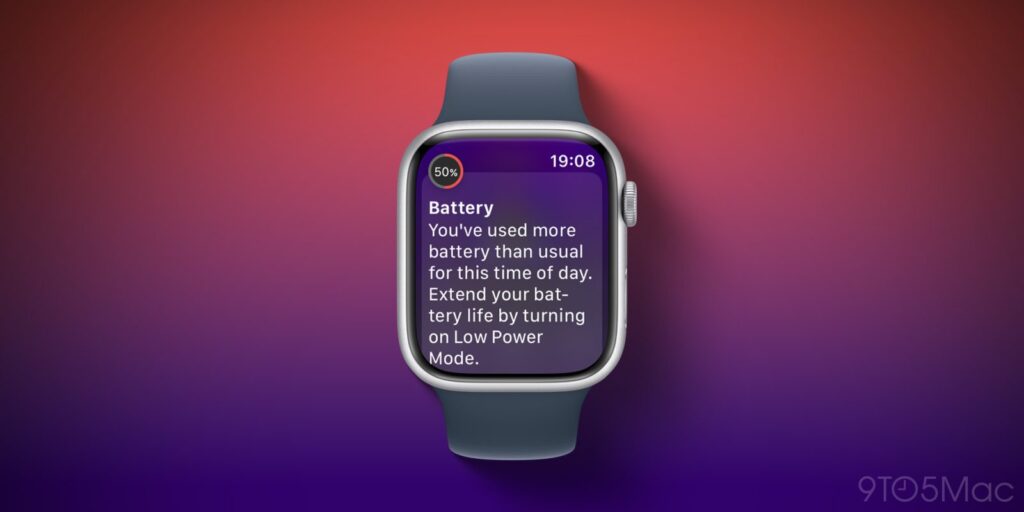With the release of watchOS 26, Apple is set to enhance the battery monitoring capabilities of its popular Apple Watch. This innovative update will track users’ average usage patterns and notify them if their battery is depleting faster than usual. The alert system provides a convenient shortcut to activate the Apple Watch’s Low Power Mode, maximizing battery life until a charger is accessible.
The new feature compares current battery usage against historical averages, offering a proactive solution to avoid unexpected power shortages. For instance, a user might receive an alert if their battery drops to 50% by 7 PM, significantly lower than their typical usage pattern. Such notifications can be crucial, especially on days without intense activity like workouts, which often involve active heart rate tracking.
Understanding the Need for Enhanced Battery Alerts
The introduction of this feature comes as users increasingly rely on their Apple Watch for a variety of tasks, from fitness tracking to communication. As the device’s functionality expands, so does its power consumption, making effective battery management essential. The alert system is designed to address this by allowing users to manage their power usage more efficiently, particularly in scenarios where the watch is used more than usual.
Running beta versions of watchOS can also impact battery life due to variations in system efficiency and performance. During these periods, users might notice a faster drain, which the new alert system can help manage. However, the functionality is equally beneficial for those using the public version of watchOS 26, as it accounts for increased usage due to activities reliant on cellular radios or GPS, especially in areas with weak signal strength.
Integration with iOS 26
Apple’s commitment to improved battery management extends beyond the Apple Watch. Similar functionality is being rolled out to iPhones with iOS 26, offering a cohesive experience across devices. Both updates are currently in closed developer beta, with a public beta expected to launch in July. The full versions will be available as free software updates later this year.
Expert Insights on Battery Management
Experts in the field of wearable technology highlight the importance of such advancements. According to Dr. Emily Chen, a leading researcher in consumer electronics,
“Battery management is a critical aspect of user experience. Features like these not only enhance device longevity but also empower users with better control over their technology.”
This sentiment is echoed by tech analysts who predict that such updates will become standard as devices continue to integrate more complex functionalities.
Looking Ahead: The Future of Wearable Technology
The move to enhance battery alerts is part of a broader trend in the tech industry towards smarter, more intuitive devices. As wearables become more integrated into daily life, the demand for efficient power management solutions will likely increase. Apple’s proactive approach in addressing these needs positions it as a leader in the field, setting a precedent for other manufacturers to follow.
As users anticipate the public release of watchOS 26 and iOS 26, the focus remains on how these updates will improve the overall user experience. With technology continually evolving, the integration of smarter battery management features marks a significant step forward in the realm of wearable technology.
In conclusion, Apple’s latest update not only enhances the functionality of its devices but also underscores the company’s commitment to innovation and user satisfaction. As the tech giant continues to refine its products, users can look forward to a more seamless and efficient interaction with their devices.
About The Author
 Trump Announces Landmark Trade Deal with Vietnam: US Goods to Enter Duty-Free
Trump Announces Landmark Trade Deal with Vietnam: US Goods to Enter Duty-Free Behind the Scenes of ‘Jurassic World Rebirth’: A Tale of Survival and Sacrifice
Behind the Scenes of ‘Jurassic World Rebirth’: A Tale of Survival and Sacrifice Denvix Unveils Next-Gen MotorX Inflator at NASCAR Coca-Cola 600
Denvix Unveils Next-Gen MotorX Inflator at NASCAR Coca-Cola 600 Wordle Puzzle for July 3: Tips and Tricks to Solve Today’s Challenge
Wordle Puzzle for July 3: Tips and Tricks to Solve Today’s Challenge How Emojis Enhance Relationship Satisfaction in the Digital Age
How Emojis Enhance Relationship Satisfaction in the Digital Age